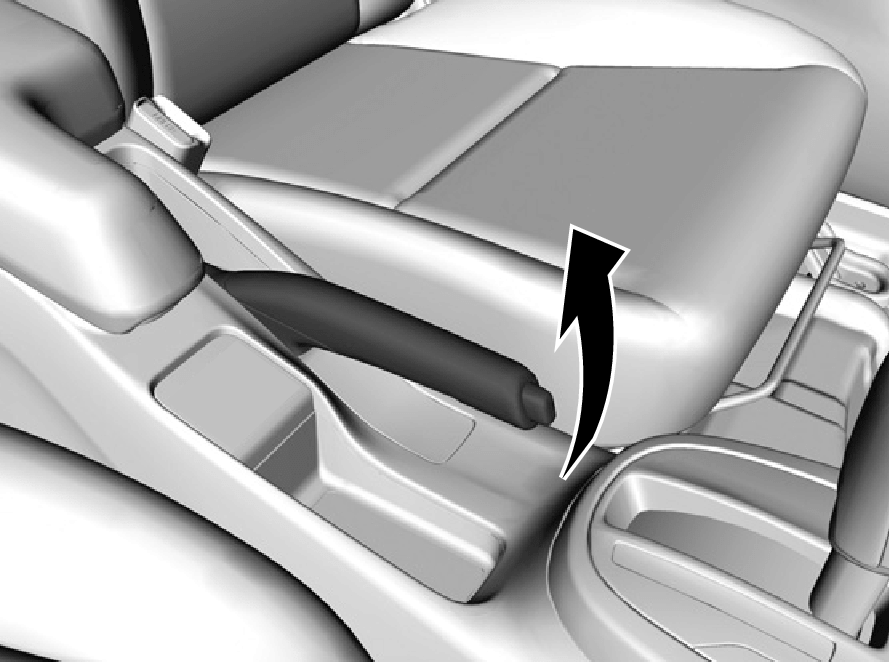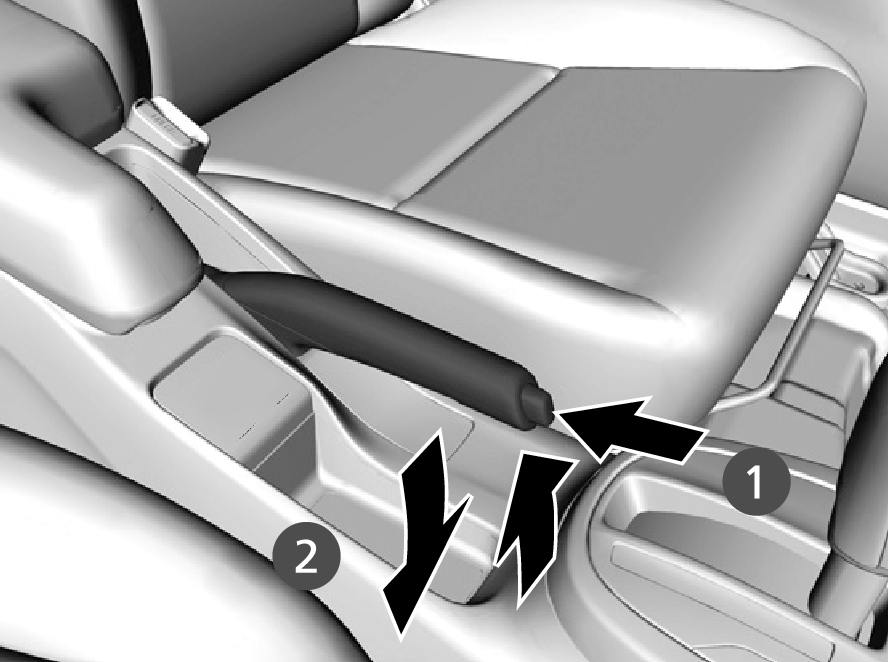Brake System
Parking Brake
Use the parking brake to keep the vehicle stationary when parking.
-
To apply:Pull the lever fully up without pressing the release button.
-

-
To release:
- Pull the lever slightly, and press and hold the release button.
- Lower the lever down all the way, then release the button.
-

- Detail
-
NOTICE
Release the parking brake fully before driving. The rear brakes and axle can be damaged if you drive with the parking brake applied.If you start driving without fully releasing the parking brake, a buzzer sounds as a warning.Always apply the parking brake when parking.
Foot Brake
Your vehicle is equipped with disc brakes at the front, and drum brakes in the rear wheels. A vacuum power assist helps to reduce the effort needed on the brake pedal. The brake assist system * increases the stopping force when you depress the brake pedal hard in an emergency situation. The anti-lock brake system (ABS) helps you to retain steering control when braking very hard.
- Detail
-
Check the brakes after driving through deep water, or if there is a buildup of road surface water. If necessary, dry the brakes by lightly depressing the pedal several times.If you hear a continuous metallic friction sound when applying the brakes, the brake pads need to be replaced. Have your vehicle checked by a dealer.Constantly using the brake pedal while going down a long hill builds up heat, which reduces the brake effectiveness. Apply engine braking by taking your foot off the accelerator pedal and downshifting to a lower gear/speed position. With manual transmission use a lower gear for greater engine braking.Do not rest your foot on the brake pedal while driving, as it will lightly apply the brakes and cause them to lose effectiveness over time and reduce pad life. It will also confuse drivers behind you.
- Recommend page